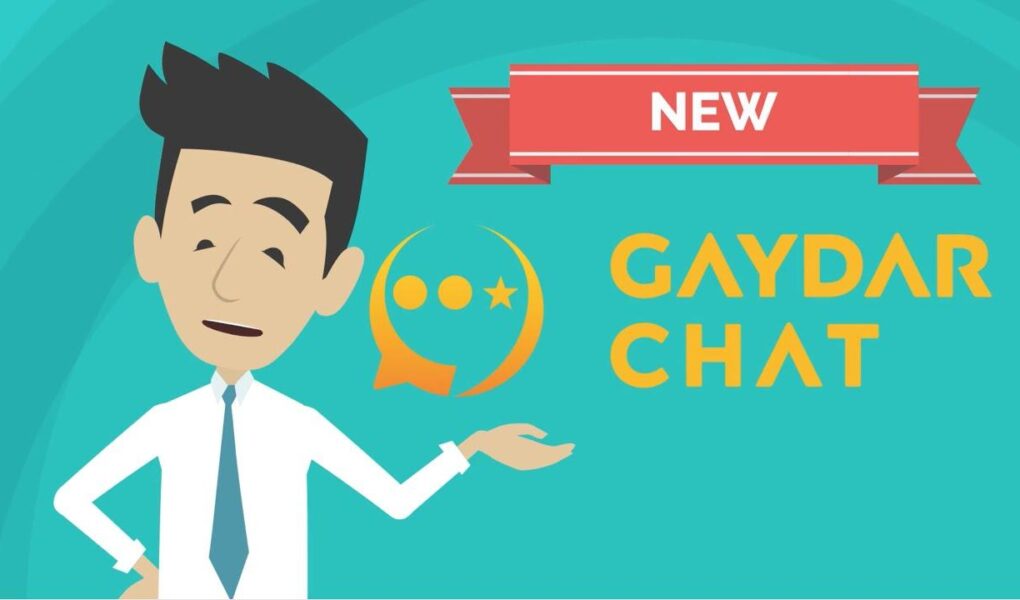Title: Decoding Connections: The Emergence of the Gaydar Web
In an era where technology intertwines seamlessly with every facet of our lives, the quest for genuine human connection remains paramount. Enter the “gaydar web”—a term that evokes intrigue and curiosity, encapsulating a phenomenon where intuition and digital interaction intersect within the LGBTQ+ community. This virtual realm offers not just a lens through which to perceive sexual orientation but also an engaging space where identity, culture, and relationships can flourish under the embrace of shared experiences. As we navigate this innovative landscape, we will explore the nuances of how individuals harness their instincts, the significance of community in shaping perceptions, and the implications of a digital world that strives to understand the complexities of human connection. Join us as we delve into the layers of the gaydar web, where technology meets the timeless quest for belonging.
Table of Contents
- Exploring the Science Behind Gaydar Technology
- How to Enhance Your Gaydar Skills for Better Connections
- Navigating Online Platforms: A Guide to Effective Communication
- Fostering Inclusivity: Making Gaydar More Accessible for All Users
- Q&A
- In Retrospect
Exploring the Science Behind Gaydar Technology
The phenomenon often referred to as “gaydar” highlights an intriguing blend of science and social perception. This intrinsic ability to assess sexual orientation, though often considered anecdotal, exhibits fascinating psychological underpinnings. Research suggests that non-verbal cues, including body language, tone of voice, and even specific facial features, play critical roles in this intuitive process. Observers may rely on a combination of subconscious signals and cultural stereotypes that influence their judgments, leading to the development of this perceived instinct. Understanding these components involves delving into both biochemical and psychological aspects of human interaction.
Recent advancements in technology have propelled the study of this intuitive sense into new realms, resulting in the creation of algorithms designed to analyze visual and auditory data. These systems strive to identify patterns associated with sexual identity, utilizing machine learning to draw upon vast datasets of human interactions. Key elements contributing to algorithmic accuracy include:
- Facial Recognition: Analyzing facial features and expressions.
- Speech Patterns: Examining variations in vocal prosody.
- Body Language: Assessing posture and movement styles.
While the effectiveness of such technology remains a subject of debate, its potential raises critical questions about privacy and ethical considerations. The table below illustrates some notable attempts to quantify the interpretation of sexuality using technology:
| Technology | Method | Accuracy Rate |
|---|---|---|
| Facial Detection Algorithms | Analyze facial features | Approx. 75% |
| Voice Analysis Software | Measure vocal tone and pitch | Approx. 70% |
| Body Language Recognition Systems | Evaluate postural dynamics | Approx. 65% |
How to Enhance Your Gaydar Skills for Better Connections
Enhancing your ability to read social cues and intentions can significantly improve your connections within the LGBTQ+ community. Start by practicing active listening—this means not only hearing words but understanding the emotions behind them. Pay attention to body language, vocal tone, and even the subtleties in conversation. Observing the way individuals interact with their surroundings can reveal a great deal about their identity and comfort level. Here are a few tips to hone this skill:
- Attend LGBTQ+ events: Engaging in diverse environments helps to expose you to different expressions of identity.
- Connect through social media: Platforms can offer insights into a person’s interests and affiliations.
- Practice empathy: Seeking to understand someone’s story encourages deeper connections.
Another effective way to develop your perception is through observation and reflection. Create a mental or physical journal to track your experiences; noting who you felt a connection with and why helps to identify patterns in your interactions. Consider using a simple framework to evaluate social encounters:
| Encounter | Vibes | Follow-Up Action |
|---|---|---|
| Event at Local Cafe | Friendly and Open | Start a casual conversation next time |
| Community Volunteer Day | Reserved but Kind | Invite for a post-event coffee |
| Online Group Chat | Supportive and Engaging | Ask to connect on social media |
This approach not only sharpens your skills but also fosters a deeper understanding of the diverse ways in which identity is expressed. Remember, developing your perceptive abilities is an ongoing process, and staying curious about people’s experiences will make you more adept at forging meaningful connections.
Navigating Online Platforms: A Guide to Effective Communication
In today’s digital landscape, mastering the art of communication across online platforms is essential, especially within niche communities. Whether you’re navigating dating apps, social forums, or LGBTQ+ networks, having a clear understanding of diverse communication styles can enhance your interactions. Embrace authenticity in your online presence by showcasing your true self, while also practicing empathy and respect towards others. This fosters an environment where open dialogues can thrive and individuals can connect on deeper levels. Some effective strategies include:
- Active Listening: Pay attention to what others are saying and ask questions to show interest.
- Utilizing Emojis: Use emojis to convey tone and emotion, which often get lost in text.
- Personalization: Custom-tailor your messages to reflect specific interests and shared experiences.
Understanding the dynamics of various online platforms can also help prevent miscommunications. Many communities have their own unwritten rules or community guidelines that dictate acceptable behavior. Familiarizing yourself with these can lead to more fruitful discussions and reduce instances of conflict. Consider using group conversations to engage with larger audiences, while also designating one-on-one chats for more personal exchanges. Here’s a quick look at effective communication tips:
| Tip | Description |
|---|---|
| Clear Language | Avoid jargon and be straightforward to minimize misunderstandings. |
| Respect Boundaries | Always consider personal boundaries regarding topics and privacy. |
| Encourage Feedback | Invite responses to foster ongoing communication and build rapport. |
Fostering Inclusivity: Making Gaydar More Accessible for All Users
In an increasingly digital world, it’s essential to ensure that platforms like Gaydar are designed with inclusivity in mind. Features should cater to users with diverse backgrounds and experiences, enhancing accessibility for everyone regardless of their technical expertise. To achieve this, consider implementing the following strategies:
- Intuitive User Interface: Create a clean, easy-to-navigate layout that minimizes confusion and barriers for new users.
- Multilingual Support: Offer translations in multiple languages to accommodate users from different linguistic backgrounds.
- Accessible Design: Prioritize compatibility with screen readers and ensure color choices are suitable for those with color blindness.
- Community Guidelines: Develop clear guidelines that emphasize respect and inclusivity, fostering a safe environment for all members.
Another effective approach to enhancing accessibility is through the use of educational resources. Providing tutorials, webinars, and even interactive Q&A sessions can help demystify the platform for less tech-savvy users. Below is a quick reference table showcasing potential resources:
| Resource Type | Description | Access |
|---|---|---|
| Tutorial Videos | Step-by-step guides on how to navigate the site. | Available on the homepage. |
| Webinars | Live sessions discussing features and user experiences. | Monthly, registration required. |
| Help Center | FAQs and articles to assist users. | Accessible through the main menu. |
Q&A
Q&A: Exploring the Concept of “Gaydar Web”
Q1: What is “gaydar web”?
A: The term “gaydar web” refers to the intuitive ability or online tools that help individuals identify the sexual orientation or preferences of others within digital spaces, particularly social media and dating platforms. It’s a blend of “gaydar,” a colloquial term for the instinct to perceive someone’s sexual orientation, and the vastness of the web where such cues are often utilized.
Q2: How does the concept of gaydar apply online?
A: Online, gaydar manifests through various cues—such as profile pictures, bios, interests, and interactions—that users engage with on platforms like Instagram, Twitter, or dating apps. These subtle signals may help individuals deduce someone’s orientation or the likelihood of a romantic connection, albeit not without potential inaccuracies or reliance on stereotypes.
Q3: Are there potential pitfalls to relying on gaydar web?
A: Absolutely. Over-reliance on online gaydar can lead to false assumptions, reinforcing stereotypes or promoting bias. It’s important to remember that while cues can offer hints, they don’t capture the full complexity of individual identities. Misinterpretations can also lead to unwelcome situations, making it crucial for individuals to engage with respect and openness.
Q4: How has the digital age influenced our perception of sexual orientation?
A: The internet has fostered both greater visibility and connectivity within the LGBTQ+ community. Social media platforms enable users to express their identities more freely and find like-minded individuals. However, it also pressures individuals to conform to specific narratives or aesthetics, complicating how they perceive themselves and how others perceive them.
Q5: Can gaydar web be utilized positively?
A: Yes, when approached with intention and care, gaydar web can facilitate connections and foster understanding. Many users find it helpful in establishing initial contact within the LGBTQ+ community, promoting safe spaces for self-expression and exploration. Conversations based on mutual interests can become more enriching when coupled with an awareness of social cues.
Q6: What should users consider when engaging with gaydar web?
A: Users should prioritize authenticity over assumptions. Engaging in open dialogue and asking direct questions, when appropriate, can lead to more meaningful interactions. It’s also vital to approach others with respect, acknowledging that everyone’s journey is unique.
Q7: What’s the future of gaydar web in the digital landscape?
A: As technology evolves, so too will our understanding of personal connections and orientation. Emerging trends may include more nuanced algorithms that respect individuality while fostering connections based on shared interests rather than solely on orientation. Education and awareness within the digital landscape will play a critical role in shaping a more inclusive and accepting online environment.
the “gaydar web” serves as both a tool and a challenge in navigating digital spaces. Understanding its nuances encourages respectful interactions and greater empathy, fostering genuine connections amid the complexities of online identities.
In Retrospect
As we navigate the complex landscape of modern dating, the concept of “gaydar web” emerges as both a fascinating cultural phenomenon and a practical tool for connection. By weaving together technology and intuition, this digital realm offers a unique space for exploration, understanding, and authenticity. Whether you view it as a lighthearted quirk, a serious matchmaking aid, or a lens through which to analyze human attraction, the gaydar web embodies the evolving conversation around identity and relationships in the digital age. As we continue to harness the power of technology to foster connections, let us remain mindful of the complexities of human emotion, embracing the diversity that enriches our shared experiences. In this vibrant tapestry of connection, we are reminded that love, in all its forms, transcends binaries and invites us to discover the beauty of our shared humanity.



